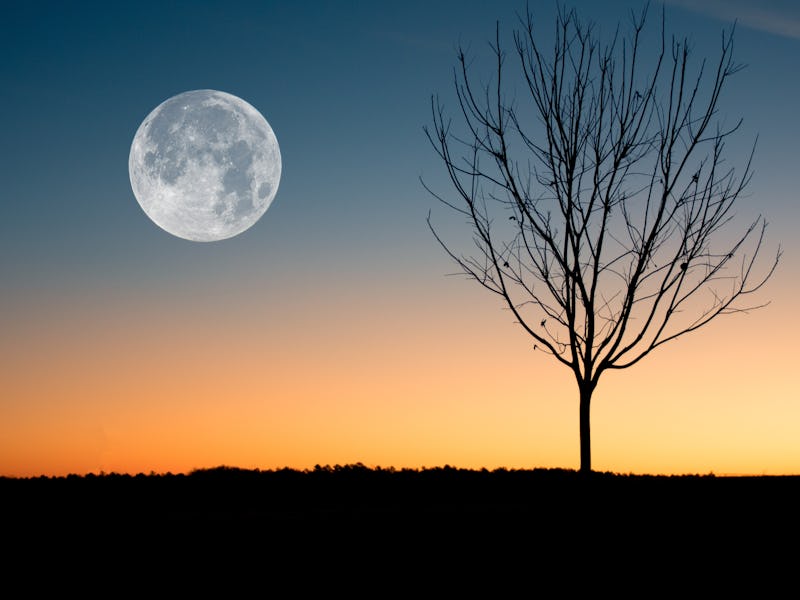Full Moon calendar 2023: When to see our nearest celestial neighbor
There are 13 Full Moons in 2023, so here's when to find the Blue Moon of the year.

2023 is going to be a busy year for Earth’s satellite. One mission — the Japanese firm ispace’s Hakuto-R lander, named for the rabbit in the Moon in Japanese mythology – is already on its way, after launching on December 19. It should arrive, after a long, low-energy loop past the Moon, in time for the Flower Moon on May 5. The Indian Space Research Organization plans to join them with the Chandrayaan-3 lander in the summer, and Roscosmos’ Luna-25 probe, which has been in planning for over a quarter-century, should arrive at the crater Boguslawsky a little later.
But from here on the ground, 2023 will also be a busy year for the Moon. There will be plenty of superMoons, eclipses, and the return of a Blue Moon — in 2022, the lunar cycles of 29.5 days matched up with the calendar, but 2023 (like 2021) sees an extra Full Moon sneak into August.
Here are the list of Full Moons in 2023:
Wolf Moon: January 6, 2023
The first Full Moon of 2023 will rear its head and brighten the winter night, reaching its zenith on January 6 at 6:08 p.m. Eastern.
The brightness should be a bit of a respite from the short winter days – this will be the winter’s first Full Moon – but this year’s Wolf Moon will also interfere with the Quadrantids meteor shower, which peak a few nights before, on January 3.
Snow Moon: February 5, 2023
The Snow Moon will fall into its fullest position on February 5, 2023 at 1:29 p.m. Eastern.
Worm Moon: March 7, 2023
The Worm Moon, which marks the last Full Moon of the winter, will be seen wiggling into place on March 7th at 7:40 a.m. Eastern.. The Spring Equinox will formally arrive a little less than two weeks later, at 5:24 p.m. Eastern. on March 20.
Pink Moon: April 6, 2023
The Pink Moon — pink for flower blossoms — blooms to its fullest on April 6 at 12:34 a.m. Eastern.
Unfortunately, the Moon will be the same color as usual.
Flower Moon: May 5, 2023
May’s Full Moon, the Flower Moon, will blossom at 1:34 p.m. Eastern. In the Eastern Hemisphere, this Full Moon will be interrupted by a penumbral eclipse — where the Moon slips into the outer edge of the Earth’s shadow, but not into total darkness.
Unfortunately, the Flower Moon will likely outshine the Eta Aquariids meteor shower, which peaks on May 5-6 with up to 60 meteors per hour in the Southern Hemisphere and up to 20 in the Northern.
Strawberry Moon: June 3, 2023
You can see the Strawberry Moon, the last Moon of Spring, ripen at 11:42 p.m. Eastern. The Summer Solstice will inaugurate summer cosmically on June 21 at 10:57 a.m. Eastern.
Buck Moon: July 3, 2023
The Buck Moon — when deer regrow their antlers — grows largest at 7:39 a.m. Eastern on the morning of July 3.
Lunar phases are a consequence of the complex dance between the Sun, Moon, and Earth.
Sturgeon Moon: August 1, 2023
The Sturgeon Moon will be splashing into place at 2:31 p.m. Eastern on August 1st. This year’s Sturgeon Moon will be one of two consecutive superMoons, coming to its closest point with Earth at a mere 233,000 miles – shaving about 6000 miles off its regular orbit.
Keen-eyed readers will also notice that its August 1st date leaves enough time in August for …
Blue Moon: August 30, 2023
A Blue Moon, the second Full Moon in a calendar month, will rise at 9:35 p.m. Eastern on August 30. It will be the second superMoon in a row, making it a super blue Moon. It won’t be too long of a wait for the next blue Moon after this one – it’ll be less than a year later, on August 24, 2024.
Harvest Moon: September 29, 2023
The familiar autumnal Harvest Moon falls into place on the morning of September 29, at 5:57 a.m. Eastern. The Harvest Moon is also known as the Barley Moon, the Corn Moon, the Fruit Moon, and, more ominously, the Hungry Ghost Moon.
Hunters Moon: October 28, 2023
The Hunter’s Moon, also known as the Travel Moon, the Dying Grass Moon, or the Blood Moon, will rise right before Halloween, at 4:24 p.m. Eastern on October 28, 2023.
Frost Moon: November 27, 2023
The Frost Moon, also known as the Beaver Moon, will build to its fullest point on November 27 at 4:16 a.m. Eastern. The Leonids meteor shower, which begins November 3, will continue through this Full Moon, although its peak will have come and gone on the 18th.
Cold Moon: December 26, 2023
The Cold Moon will be the last Full Moon of 2023 and the first Full Moon of winter. It will reach its peak at 7:33 p.m. Eastern, the best part of a week after winter officially begins on December 21 at 10:28 p.m. Eastern.